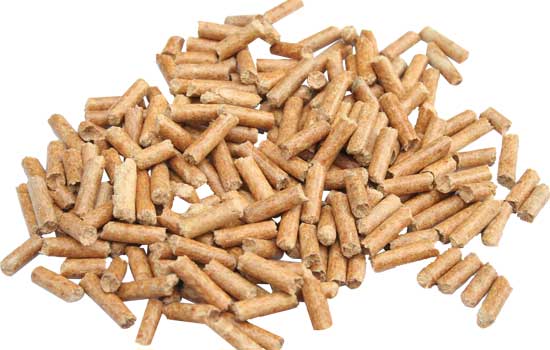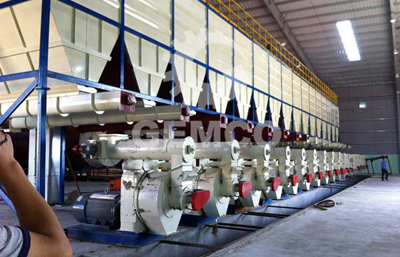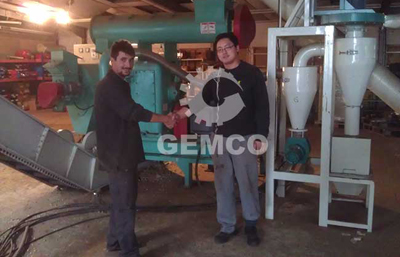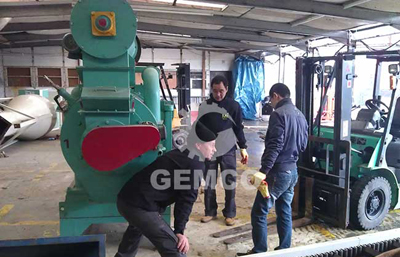why make biomass pellet
Biomass pellet is also called biofuel, which burns cleaner than nonrenewable fossil fuels and has already provided energy to over one million homes, businesses and schools in North America. Biomass pellet as green biofuel, is an economical and sustainable energy source that continues to grow internationally. Biomass pellet has wider and wider application nowadays and it has already been produced across the USA, Canada Australia, Europe and many other countries all over the world.

More and more people from different countries are making biomass pellet. Why so many people make biomass pellet? The reasons are mainly as follows:
-
The raw materials for making biomass pellet are common, cheap and easy to collect. At this point, you are actually turning waste into treasure when making biomass pellets.
Biomass pellet is usually made from a wide range of organic materials, also called biomasses, such as: industrial waste and co-products from the milling of lumber, manufacturing of wood products and furnitures, and Empty Fruit Bunches (EFB) palm kernel shells, coconut shells, tree tops and branches discarded during logging operations; food waste like peanut shells and sunflower seeds shells; agricultural residuals like straw, rice husks, cotton and wheat stalks; energy crops, grass and virgin lumber, etc.
No matter you make biomass pellets at home or invest in biomass pellet industry, you can easily receive large benefits. You can collect fallen leaves, tree branches, waste grass on your lawn and all the other common biomass materials, and make them into biomass pellets at home or on your own farm with GEMCO household pellet makers. Or if you want to invest in biomass pellets business, we can customize the most suitable biomass pelleting line for you based on your special requirements.
-
Biomass pellet has high density, high combustion value and many advantages compared with its biomass raw materials. In short, biomass pellet fuel is a good way to divert millions of tons of waste from landfills and turn it into clean energy.
The variable biomass raw materials usually have high moisture content and natural decay, which lower their combustion value. However, biomas pellet has high density and is condensed to a uniform and competitive fuel product. The following comparison takes wood pellets as examole, and explains why biomass pellet enjoy wide popularity:
a. Wood pellets provide 4,800 kWh of energy per tonne.
b. Wood chips provide 3500 kWh of energy per tonne at 30% moisture content.
c. Logs provide 3500 kWh per tonne at 30% moisture content.
d. Kerosene provides 10.2 kWh per litre.
e. The average home considered to be 3 bedroom house using 30,000 kWH of heating energy in one year.
Besides, the cost for transport and store biomass pellets is much lower than that of biomass raw materilas.
-
Biomass pellet’s application: home use and industry. Save money.
Biomass pellet as a renewable, clean-burning and cost stable home heating alternative is necessary for pellet stoves and freestanding stoves, fireplace inserts and even furnaces. Biomass pellets burn much more efficiently than wood logs, which means pellets produce less ash, less smoke and more heat. More and more families use pellet stoves now. Pellet stove looks much like wood stove, but pellet stove is automated. Heating with biomass pellets is much easier and more convenient at home, as it only requires adding biomass pellets into a hopper, set the desired heat output and provide necessary appliance maintenance, such as cleaning out an ash pan. All other aspects of the heating process occur automatically. Therefore, more and more people prefer pellet stoves now.
What’s more, as clean and green enery, biomass pellet also has wide application in industry, most common in industrial biomass pellet boilers, which maximise the heat gained from burning so minimising the amount of fuel you may need rto purchase. More important, compared with the traditional fossiol fuel like oil and gas, biofuel is much more economical. Last but not least, biomass pellet is also used in horse stable, because biomass pellet quickly soaks up the moisture and odour of animal waste to provide a healthy environment. What’s more, biomass pellets are heated to high temperatures during production and dust is extracted. Therefore, biomass pellets are sterile, and they have no additives, toxins or chemicals. Pellets also require less space to store. All these make biomass pellet a goodchoice for horse and other animal bedding.
-
Reduce environmental pollution
Though burning biomass pellets causes greenhouse gas emissions, these emissions are ‘sequestered’ by growing more biomass than is harvested because trees and plant matter take in carbon dioxide and emit oxygen while they grow. Sustainable land management practice ensures that harvesting biomass for fuel is done in a way that is not detrimental to, or is beneficial to, forest eco-systems, the landscape, wood grown for construction, and other land uses such as growing food crops. Burning biomass pellets to produce electricity is on the rise in Europe, where the pellets are classified as a form of renewable energy.
As industrial pellet making facilities are rapidly being built, concerns are growing about logging. However, wood pellet industry overwhelmingly uses tree branches and other waste wood to manufacture pellets, making them a carbon-natural form of energy. According to industry officials, manufacturing and burning biomass pellets is an important part of the mix of renewable energy options. Seth Ginther, executive director of the United States Industrial Pellet Association, says that wood pellets are a “low-cost, low-carbon alternative” to coal. In addition, he says, wood biomass is lower in sulfur, nitrogen, ash, chlorine, and other chemicals than coal and traditional fossil fuels. And Rep.John Barrow from the U.S. House of Representatives, Committee on Energy & Commerce says that:“ wood pellets, in particular have given new life to logging companies and foresters throughout the U.S. At the same time, they have helped the E.U. reach its clean energy goals. That’s a situation that benefits both sides of our relationship.”In a word, biomass pellets are a vital part of the energy mix and provide neded baseload renewable power to Europe. They are good for the environment and carbon beneficial when compared to fossil fuels. Forests and biomass pellets producers should work together to maximize the benefits to foresets while ensuring taht emissions remain low during souring, production and transport.
We receive enquiries in English, Español (Spanish), Русский язык (Russian), Français (French) and العربية (Arabic). Our professional team will reply to you within one business day. Please feel free to contact us!




